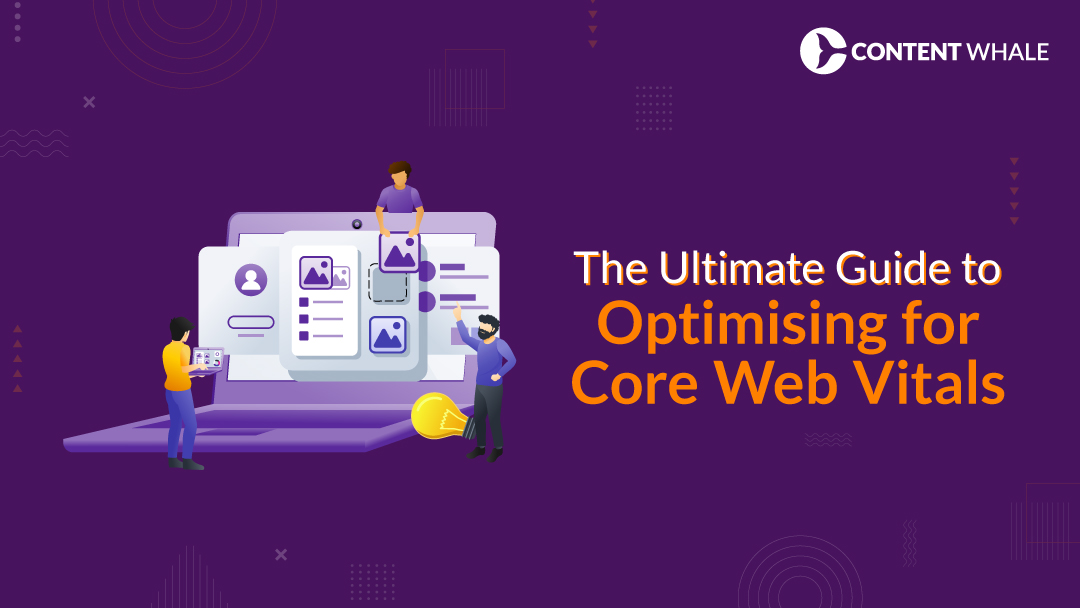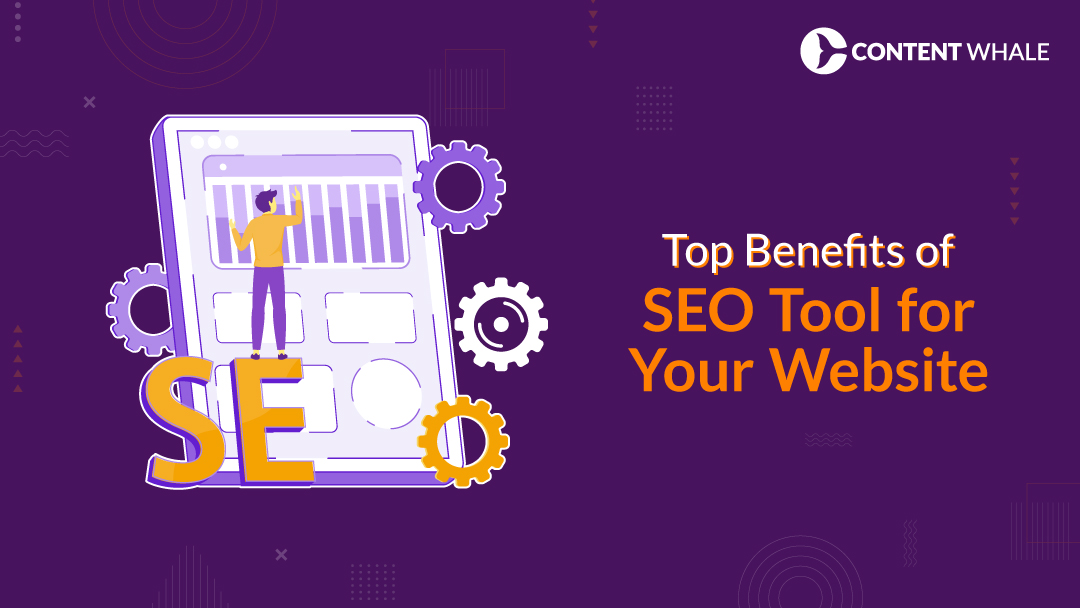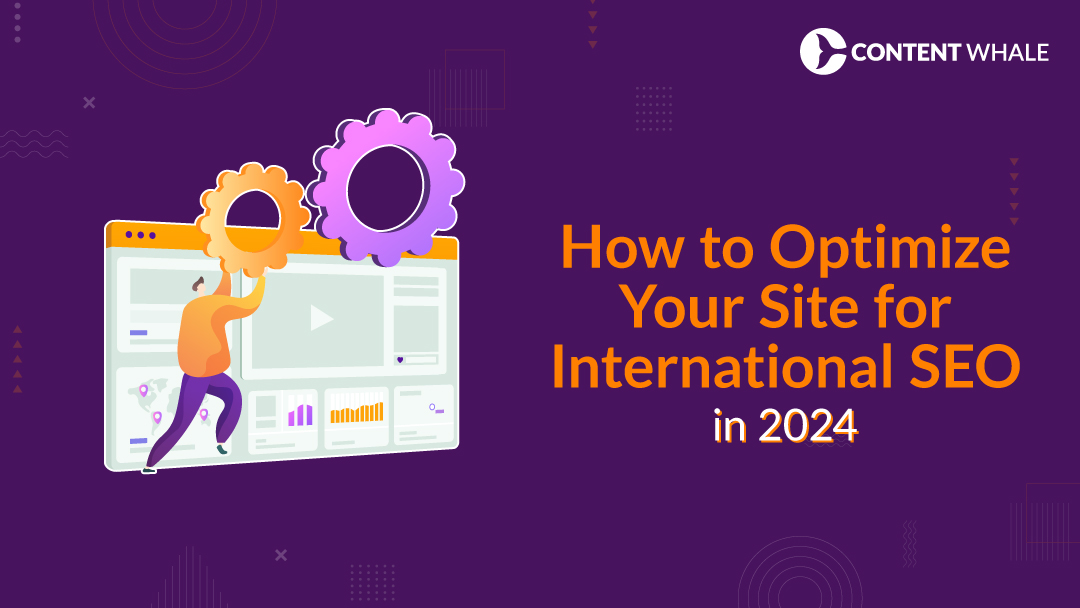Core Web Vitals are a set of user-centric performance metrics introduced by Google to quantify the quality of user experience on a webpage. These metrics have become a significant factor in search engine optimization (SEO) and user engagement, making it essential for webmasters to understand and optimize them effectively.
Core Web Vitals consist of three primary metrics: Largest Contentful Paint (LCP), Interaction to Next Paint (INP), and Cumulative Layout Shift (CLS). Each metric addresses a specific aspect of user experience:
- LCP measures the loading performance of the largest visible content element. A good LCP score is achieved when this element loads within 2.5 seconds.
- INP replaces the former First Input Delay (FID) and assesses the responsiveness of a webpage by measuring the delay between user interactions and visual updates. An optimal INP score is under 200 milliseconds.
- CLS evaluates visual stability by tracking unexpected layout shifts during the page’s lifecycle. A CLS score below 0.1 is considered ideal to ensure a stable and visually consistent experience.
The importance of Core Web Vitals in SEO cannot be overstated. Google uses these metrics as part of its ranking algorithm, meaning that sites with better Core Web Vitals scores are more likely to rank higher in search results. This shift emphasizes the need for website owners to focus on enhancing user experience alongside traditional SEO strategies such as keyword optimization and backlink building.
In this guide, we will delve into the specifics of how to optimise for core web vitals, covering effective strategies and the best tools to use for continuous improvement. By following these guidelines, you can significantly improve your website’s user experience and SEO performance, ensuring better rankings and higher user satisfaction.
Understanding Core Web Vitals

Core Web Vitals are a set of performance metrics introduced by Google to measure key aspects of user experience on a website. These metrics are critical for assessing and optimizing a site’s loading performance, interactivity, and visual stability, all of which contribute significantly to both user satisfaction and search engine rankings.
Definition and Significance
Core Web Vitals consist of three primary metrics:
1. Largest Contentful Paint (LCP)
This metric measures the time it takes for the largest visible content element to load within the viewport. A good LCP score is under 2.5 seconds, indicating that the main content loads quickly for the user.
2. Interaction to Next Paint (INP)
Introduced in 2024 to replace First Input Delay (FID), INP measures the responsiveness of a webpage by tracking the delay between a user interaction (such as clicking a button) and the visual response. A good INP score is under 200 milliseconds, ensuring that the website is interactive and responsive throughout the user’s session.
3. Cumulative Layout Shift (CLS)
This metric evaluates visual stability by measuring the sum total of all unexpected layout shifts that occur during the loading phase. A CLS score below 0.1 is considered good, ensuring that the content does not shift unexpectedly and disrupt the user experience.
Impact on User Experience and SEO
Optimizing these Core Web Vitals is crucial for improving user experience and achieving better SEO performance. Websites that perform well on these metrics tend to load faster, respond more quickly to user interactions, and provide a stable visual experience. These factors are directly linked to higher user satisfaction, reduced bounce rates, and increased engagement.
Moreover, Google uses Core Web Vitals as part of its ranking algorithm. This means that websites with better Core Web Vitals scores are more likely to rank higher in search results. As a result, improving these metrics can lead to increased visibility, more organic traffic, and potentially higher conversion rates.
Key Metrics Breakdown
1. Largest Contentful Paint (LCP)
- Goal: Load the largest content element within 2.5 seconds.
- Optimization Tips: Optimize and compress images, use a Content Delivery Network (CDN), and eliminate render-blocking resources such as large CSS and JavaScript files.
2. Interaction to Next Paint (INP)
- Goal: Ensure interactions respond within 200 milliseconds.
- Optimization Tips: Reduce JavaScript execution time, use efficient coding practices to minimize main-thread blocking, and leverage web workers for heavy computations.
3. Cumulative Layout Shift (CLS)
- Goal: Maintain a CLS score below 0.1.
- Optimization Tips: Reserve space for images and ads by setting width and height attributes, use font-display: optional for fonts, and avoid inserting new content above existing content during load.
In summary, understanding and optimizing Core Web Vitals are essential steps in creating a user-friendly website that ranks well in search engines. By focusing on these metrics, you can enhance both the user experience and SEO performance of your site, ensuring it meets the standards set by Google for 2024 and beyond.
Strategies to Optimize Core Web Vitals

Optimizing Largest Contentful Paint (LCP)
Largest Contentful Paint (LCP) measures how quickly the main content of a webpage loads and is visible to users. A good LCP score is under 2.5 seconds. Here are some strategies to optimise LCP:
1. Optimize and Compress Images
Use modern image formats like WebP and ensure images are compressed to reduce load times without compromising quality. Implementing lazy loading for images can also enhance loading performance by only loading images as they appear in the viewport.
2. Improve Server Response Times
Use a Content Delivery Network (CDN) to store copies of your site’s content across various locations globally, reducing latency. Optimize server configurations and employ caching strategies to ensure the server processes requests efficiently.
3. Remove Render-Blocking Resources
Minimize or defer the loading of CSS and JavaScript files that block the rendering of the main content. Inline critical CSS and defer non-essential scripts to ensure the primary content loads quickly.
4. Use Preloading
Preload critical resources like fonts and above-the-fold images to ensure they are available as soon as the page starts loading. This helps in displaying the main content faster, improving LCP scores.
Enhancing Interaction to Next Paint (INP)
Interaction to Next Paint (INP) is a new metric that measures the responsiveness of a webpage to user interactions throughout the page’s lifecycle. A good INP score is under 200 milliseconds. Here’s how to optimize INP:
1. Minimize JavaScript Execution
Heavy JavaScript execution can delay interactions. Break long tasks into smaller, asynchronous tasks and use the async or defer attributes on script tags to prevent blocking the main thread.
2. Optimize Event Callbacks
Reduce the processing time of event callbacks by removing unnecessary tasks and deferring non-critical tasks. This ensures that user interactions like button clicks are handled promptly.
3. Utilize Web Workers
Offload heavy computations to web workers to keep the main thread free for user interactions. This can significantly improve the responsiveness of interactive elements on the page.
Reducing Cumulative Layout Shift (CLS)
Cumulative Layout Shift (CLS) measures the visual stability of a webpage by tracking unexpected layout shifts. A good CLS score is below 0.1. Here are strategies to reduce CLS:
1. Set Explicit Dimensions
Define width and height attributes for images, videos, and other media to ensure the browser allocates the correct amount of space while these elements are loading. This prevents unexpected shifts in layout.
2. Reserve Space for Dynamic Content
Ensure that ads, iframes, and other dynamic content have reserved spaces using containers with proper dimensions. This approach minimizes layout shifts when these elements load or change size.
3. Optimize Font Loading
Use font-display: optional or font-display: swap to control how fonts are loaded and displayed, preventing layout shifts caused by late-loading fonts. Preloading essential web fonts can also help reduce CLS.
4. Choose Performant Animation Techniques
Use CSS properties like transform and opacity for animations instead of properties that trigger layout recalculations, such as width and height. This ensures smoother animations without causing layout shifts.
By implementing these strategies, you can significantly improve core web vitals and enhance the user experience on your website. Consistent monitoring and optimization using appropriate core web vitals tools will help maintain optimal performance and high SEO rankings.
Tools for Measuring and Improving Core Web Vitals

Optimizing Core Web Vitals is essential for improving both user experience and search engine rankings. Various tools can help you measure and enhance these metrics effectively. Here are some of the most popular and efficient tools:
Google Search Console
Google Search Console provides a comprehensive Core Web Vitals report that helps site owners evaluate the performance of their pages based on real-world data from the Chrome User Experience Report (CrUX). This report identifies groups of pages that require improvement, allowing you to focus your optimization efforts where they are most needed.
PageSpeed Insights
PageSpeed Insights (PSI) is an invaluable tool for analyzing both lab and field data related to Core Web Vitals. It provides detailed information on how your page performs against key metrics like LCP, INP, and CLS, and offers specific suggestions for improvement. PSI uses Lighthouse for lab data and CrUX for field data, making it a comprehensive solution for performance analysis.
Lighthouse
Lighthouse is an open-source, automated tool that runs audits for performance, accessibility, progressive web apps, SEO, and more. It provides detailed reports on various performance metrics, including Core Web Vitals. Lighthouse is integrated into Chrome DevTools and can also be run from the command line or as a Node module.
Chrome DevTools
Chrome DevTools includes features specifically designed for diagnosing and improving Core Web Vitals. The Performance panel allows you to record and analyze page load performance, helping you identify and fix issues related to LCP, INP, and CLS. DevTools also provide insights into Total Blocking Time (TBT), which can be a useful proxy for understanding and improving INP.
Web Vitals Extension
The Web Vitals extension for Chrome provides real-time feedback on Core Web Vitals metrics as you browse. It offers a quick and easy way to monitor performance on any page you visit, turning green, orange, or red based on the performance of LCP, INP, and CLS. This extension is particularly useful for developers who want to keep an eye on performance during development and debugging.
Chrome UX Report (CrUX)
The Chrome UX Report (CrUX) is a public dataset of real user experience data on millions of websites. It provides field data for Core Web Vitals metrics, allowing you to understand how real users experience your site. CrUX data can be accessed through the BigQuery dataset or the CrUX API, which provides daily updates and detailed performance insights.
Real User Monitoring (RUM) Tools
RUM tools collect data on how real users interact with your website, providing insights into the performance of Core Web Vitals in real-world scenarios. Tools like Google Analytics, New Relic, and SpeedCurve offer RUM capabilities, allowing you to monitor and optimize user experience based on actual user interactions.
Using these tools, you can effectively measure and improve your website’s Core Web Vitals, ensuring a better user experience and improved SEO performance. Regular monitoring and optimization are key to maintaining high performance standards and staying ahead in search rankings.
Advanced Techniques for Core Web Vitals Optimization

Critical Rendering Path Optimizations
Optimizing the critical rendering path is essential for improving the speed at which the main content of a webpage becomes visible. This involves minimizing the number of critical resources, reducing the size of critical resources, and ensuring efficient delivery of these resources.
1. Minimize Critical Resources
Reduce the number of critical resources by inlining critical CSS and deferring non-essential JavaScript. Tools like Lighthouse can help identify render-blocking resources that need to be optimized or deferred.
2. Reduce the Size of Critical Resources
Minify CSS and JavaScript files to decrease their size. This reduces the time the browser needs to download and parse these files, leading to faster rendering times.
3. Efficient Resource Delivery
Use Content Delivery Networks (CDNs) to distribute content closer to users, reducing latency. Implement HTTP/2 to enable multiplexing, which allows multiple resources to be sent over a single connection, further speeding up load times.
Using Preconnect and Preload for Key Resources
Preconnect and preload are powerful techniques for improving resource loading times:
1. Preconnect
Establish early connections to important third-party origins to reduce latency. For example, using <link rel=”preconnect” href=”https://example.com”> can help establish early connections to necessary resources.
2. Preload
Use the <link rel=”preload” href=”path/to/resource” as=”resource_type”> tag to preload key resources. This ensures that critical assets like fonts, images, and CSS are loaded earlier in the page lifecycle, leading to faster rendering times and better LCP scores.
Advanced Caching Strategies
Implementing advanced caching strategies can significantly enhance website performance by reducing server response times and load times:
1. Service Workers
Use service workers to cache assets and serve them from local storage, reducing the need to fetch resources from the network on subsequent visits. This can drastically improve loading times for repeat visitors.
2. Cache-Control Headers
Properly configure cache-control headers to ensure that resources are cached appropriately by browsers and intermediary caches. This helps in reducing server load and improving page load times.
Leveraging Modern Image Formats
Modern image formats like WebP and AVIF offer better compression rates and quality compared to traditional formats like JPEG and PNG. By adopting these formats, you can reduce image file sizes, leading to faster load times and improved LCP scores:
1. WebP and AVIF
Convert images to WebP or AVIF to take advantage of their superior compression and quality. Tools like ImageMagick or online converters can help in converting existing images to these formats.
2. Responsive Images
Use the srcset attribute to serve appropriately sized images based on the user’s device. This ensures that users do not download unnecessarily large images, improving load times and user experience.
Optimizing JavaScript Execution
Heavy JavaScript execution can severely impact INP by blocking the main thread and delaying user interactions. Optimizing JavaScript is crucial for maintaining responsiveness:
1. Code Splitting and Lazy Loading
Split large JavaScript bundles into smaller, manageable chunks and load them as needed. This reduces the initial load time and ensures that critical JavaScript is executed first.
2. Web Workers
Offload heavy computations to web workers to free up the main thread. This ensures that user interactions are processed promptly, improving INP scores.
Monitoring and Continuous Improvement
Regular monitoring and continuous improvement are key to maintaining high Core Web Vitals scores. Use tools like Google Search Console, PageSpeed Insights, and Real User Monitoring (RUM) tools to track performance and identify areas for improvement:
1. Google Search Console
Provides detailed reports on Core Web Vitals performance, highlighting areas that need attention across your site.
2. PageSpeed Insights
Offers actionable insights into performance issues and recommendations for improvements based on both lab and field data.
3. RUM Tools
Tools like Google Analytics, SpeedCurve, and others provide real-time data on user interactions and site performance, helping you understand and optimize the actual user experience.
By implementing these advanced techniques, you can significantly enhance core web vitals and ensure a superior user experience, leading to better core web vitals SEO performance. Regular monitoring and adjustments using the appropriate core web vitals tools are essential for maintaining optimal site performance.
Conclusion

Optimizing Core Web Vitals is essential for improving your website’s SEO performance and providing a superior user experience. These metrics—Largest Contentful Paint (LCP), Interaction to Next Paint (INP), and Cumulative Layout Shift (CLS)—are integral to Google’s ranking algorithm and have a significant impact on how users interact with your site.
Key Points Recap
1. Largest Contentful Paint (LCP)
Aim to load the largest content element within 2.5 seconds. Techniques to achieve this include optimizing and compressing images, improving server response times, and using a Content Delivery Network (CDN).
2. Interaction to Next Paint (INP)
Ensure that user interactions result in visual updates within 200 milliseconds. This can be achieved by minimizing JavaScript execution, optimizing event callbacks, and using web workers to handle background tasks.
3. Cumulative Layout Shift (CLS)
Maintain a CLS score below 0.1 to ensure visual stability. This involves setting explicit dimensions for images and videos, reserving space for dynamic content like ads, and optimizing font loading.
Ongoing Monitoring and Adaptation
Regularly monitoring Core Web Vitals using tools like Google Search Console, PageSpeed Insights, and Real User Monitoring (RUM) tools is crucial. These tools provide actionable insights and help identify areas for improvement based on real user data. Continuous testing and optimization ensure that your website remains responsive and user-friendly.
Future Trends
As web technologies evolve, staying updated with the latest developments and best practices is vital. Emerging technologies, enhanced browser capabilities, and changing user expectations will continue to influence Core Web Vitals. Adapting to these changes and integrating new techniques will help maintain high performance and competitive advantage in search rankings.
By prioritizing Core Web Vitals, you not only enhance user experience but also boost your website’s SEO performance, leading to increased traffic, higher engagement, and better conversion rates. Regular optimization and staying informed about industry trends will ensure your website meets and exceeds user expectations.
For more detailed guidance and advanced techniques on optimizing Core Web Vitals, you can refer to resources provided by Google and other industry experts.
FAQs
What are Core Web Vitals?
Core Web Vitals are a set of metrics introduced by Google to measure the user experience of web pages. They focus on three main aspects: loading performance, interactivity, and visual stability. The key metrics include:
- Largest Contentful Paint (LCP): Measures loading performance and aims for the largest content element to be visible within 2.5 seconds.
- Interaction to Next Paint (INP): Replaces First Input Delay (FID) in 2024, measuring the time taken for a page to respond to user interactions. A good INP score is below 200 milliseconds.
- Cumulative Layout Shift (CLS): Evaluates visual stability by tracking unexpected layout shifts, with a score below 0.1 considered ideal.
How do Core Web Vitals impact SEO?
Core Web Vitals are integral to Google’s ranking algorithm, meaning that better scores can significantly improve your site’s visibility in search results. Websites that load quickly, respond promptly to user interactions, and maintain visual stability are favored by Google, leading to higher rankings and more organic traffic. Improving these metrics is essential for effective Core Web Vitals SEO, as it not only enhances user experience but also boosts search engine performance.
What tools can help measure Core Web Vitals?
Several tools are available for measuring and improving Core Web Vitals:
- Google Search Console: Provides a detailed report on your site’s Core Web Vitals, highlighting areas that need improvement.
- PageSpeed Insights: Analyzes both lab and field data to provide actionable insights and recommendations.
- Lighthouse: An open-source tool that audits performance, accessibility, and SEO, including Core Web Vitals.
- Web Vitals Extension: A Chrome extension that gives real-time feedback on Core Web Vitals as you browse.
- Real User Monitoring (RUM) Tools: Tools like Google Analytics and SpeedCurve collect data from actual users, providing insights into real-world performance.
What are some quick tips to improve Core Web Vitals?
Here are a few quick tips to optimise core web vitals:
- Improve LCP: Optimize images and videos, use a CDN, and eliminate render-blocking resources.
- Enhance INP: Minimize JavaScript execution time, optimize event callbacks, and utilize web workers.
- Reduce CLS: Set explicit dimensions for images and videos, reserve space for ads and dynamic content, and optimize font loading.
Why is it important to optimise Core Web Vitals continuously?
Continuous optimization of Core Web Vitals is crucial because user expectations and web standards evolve over time. Regular monitoring and adjustments ensure that your website remains competitive, providing a superior user experience and maintaining high SEO rankings. Staying updated with the latest best practices and technological advancements helps in adapting to changes efficiently.
By following these guidelines and utilizing the appropriate core web vitals tools, you can effectively enhance your website’s performance, user experience, and SEO success.





